
Vanderbilt Mansion National Historic Site is a historic house museum in Hyde Park, New York. It became a National Historic Landmark in 1940. It is owned and operated by the National Park Service.

Buildings, sites, districts, and objects in Virginia listed on the National Register of Historic Places:

The President William Jefferson Clinton Birthplace Home National Historic Site is located in Hope, Arkansas. Built in 1917 by Dr. H. S. Garrett, in this house the 42nd President of the United States Bill Clinton spent the first four years of his life, having been born on August 19, 1946, at Julia Chester Hospital in Hope, Arkansas.. The house was owned by his grandparents, Edith Grisham and James Eldridge Cassidy, and they cared for him when his mother, Virginia, was away working as an anesthetist in New Orleans.
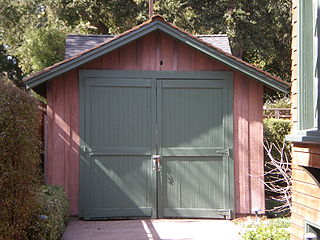
The HP Garage is a private museum where the company Hewlett-Packard (HP) was founded. It is located at 367 Addison Avenue in Palo Alto, California. It is considered to be the "Birthplace of Silicon Valley." In the 1930s, Stanford University and its Dean of Engineering Frederick Terman began encouraging faculty and graduates to stay in the area instead of leaving California, and develop a high-tech region. HP founders William Hewlett and David Packard are considered the first Stanford students who took Terman's advice.

The Dr. Charles M. Wright House is a historic house located at 3 W. Jackson St. in Altamont, Illinois. The house was built in 1889 for Charles M. Wright I and his family. Wright, one of the only doctors in western Effingham County until his retirement in 1878, ran the only bank in Altamont at the time. Architect Charles H. Spilman designed the house in the Italianate style. The brick house has an asymmetrical front facade with two bay windows to the left of the front entrance; the window bays are topped by a large half-hipped dormer. The house's cornice and the tops of the window bays are decorated with brackets. As of 1985, the Wright family still lived in the house.
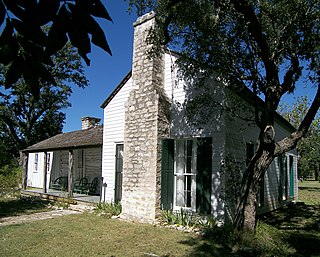
The Pound Farmstead, also known as the Dr. Pound Pioneer Farmstead, is a historic farm located in Hays County, Texas United States. The original 750-acre (3.0 km2) farm was founded by Doctor Joseph McKegg Pound and his wife Sarah in 1854 in an unsettled area of Central Texas, now located in the City of Dripping Springs. The farmstead is currently a museum about the life and times of Dr. Pound, his family and descendants. The property was added to the National Register of Historic Places on July 28, 1995.

Between 1873 and 1945, Saranac Lake, New York became a world-renowned center for the treatment of tuberculosis, using a treatment that involved exposing patients to as much fresh air as possible under conditions of complete bed-rest. In the process, a specific building type, the "Cure Cottage", developed, built by local residents seeking to capitalize on the town's fame, by physicians, and often by the patients themselves. Many of these structures are extant, and their historic value has been recognized by listing on National Register of Historic Places.
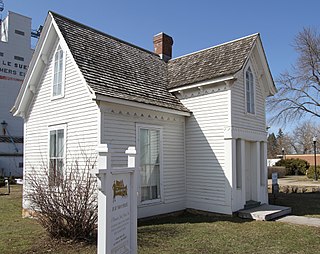
The Dr. William W. Mayo House, located at 118 North Main Street in Le Sueur, Minnesota, United States, is listed on the National Register of Historic Places (NRHP). It was built in 1859 by James Mayo and his brother, William Worrall Mayo who emigrated from Salford, United Kingdom, to the United States in 1846 and became a doctor. William's older son, William James Mayo was born in the home in 1861. William W. Mayo aided pioneers and their families during the Dakota War of 1862 and later moved to Rochester where he became the examining surgeon for the southern Minnesota Civil War draft board. He and his sons, William and Charles founded the 27-bed Saint Marys Hospital which opened in 1889 following the 1883 Rochester tornado. They later founded their namesake, the Mayo Clinic.

The William Murphy House is a historic house located at 97 Sewall Avenue in Brookline, Massachusetts.

The Dr. Anna E. and Andrew A. Johnstone House is a historic house in Des Moines, Iowa, United States. Built in 1887, the Queen Anne-style house was individually listed on the National Register of Historic Places in 1996. It was included as a contributing property in the Polk County Homestead and Trust Company Addition Historic District in 2016.

Croom is an unincorporated community and census-designated place in Prince George's County, Maryland, United States. As of the 2010 census it had a population of 2,631. It largely consists of former tobacco farms and forests converting to Washington, DC bedroom subdivisions such as nearby Marlton. The main part of Patuxent River Park is in Croom.

The Dr. S. O. Richardson House is a historic house at 694 Main Street in Wakefield, Massachusetts. Built in the late 1830s, this wood frame house is one of the finest Greek Revival houses in Wakefield, and was the home of Dr. Solon O. Richardson, a locally prominent physician and real estate developer. The house was listed on the National Register of Historic Places in 1989.
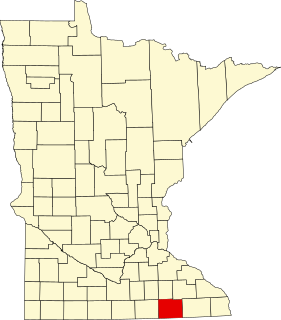
This is a list of the National Register of Historic Places listings in Mower County, Minnesota. It is intended to be a complete list of the properties and districts on the National Register of Historic Places in Mower County, Minnesota, United States. The locations of National Register properties and districts for which the latitude and longitude coordinates are included below, may be seen in an online map.

The Dr. George McLelland Middleton House and Garage is a historic building located in the central part of Davenport, Iowa, United States. The residence has been listed on the National Register of Historic Places since 1982.

Dennis Hill State Park is a public recreation area located in the town of Norfolk, Connecticut, that was once the estate of Dr. Frederick Shepard Dennis. The state park offers hiking, picnicking, and scenic views. It is administered by the Connecticut Department of Energy and Environmental Protection.
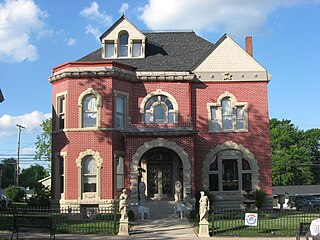
The Oram Nincehelser House is a historic residence in the village of Mechanicsburg, Ohio, United States. Built for a nineteenth-century local doctor, it has been named a historic site because of its distinctive architecture.
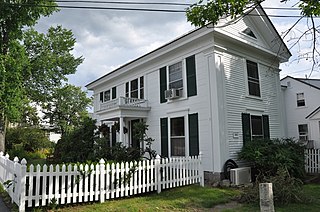
The Dr. Solomon M. Whipple House, also known as the Clough or Woodward House, is a historic house on Main Street in the center of New London, New Hampshire. Built in 1850 for a long-serving doctor, it is the only Greek Revival house in the town. It was listed on the National Register of Historic Places in 1985. It is now the front portion of an assisted living facility.

The Gehring Clinic is a historic house and medical facility at the south end of Broad Street Historic District in Bethel, Maine. Built in 1896 for Doctor John George Gehring, it is a fine local example of Queen Anne architecture. It is recognized, however, for its association with Gehring, a nationally known psychotherapist who was an early proponent of the use of hypnosis to treat nervous disorders. Gehring opened his large home as a rest home for those who traveled to Bethel to receive his treatment. The property was listed on the National Register of Historic Places in 1976.

The Dr. Robert Smith House, also known as Dr. Bob's Home, is a historic house museum at 855 Ardmore Avenue in Akron, Ohio. Built in 1914, it is significant as the home from 1915 to 1950 as the home of Dr. Bob Smith, one of the cofounders of Alcoholics Anonymous (AA). It was here that Smith and Bill W. began the meetings that became AA, through which Smith achieved sobriety. The house was listed on the National Register of Historic Places in 1985, and was designated a National Historic Landmark in 2012. It is now owned by Founders Foundation, and is operated by them as a museum dedicated to the history of AA.






















